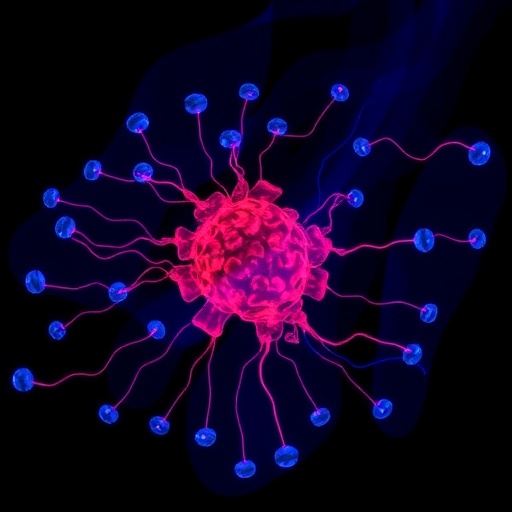This announcement comes only weeks after another team of scientists created an electronic link between the brains of two rats. But unlike that study, in which brain implants were inserted into a rat’s motor cortex, the new brain-to-computer interface (BCI) utilizes transcranial focused ultrasound (FUS) and electroencephalography (EEG) technology, which simply requires the wearing of external devices.
To make it work, Seung-Schik Yoo of Harvard Medical School in Boston and colleagues anaesthetized a rat and hooked it up to a device that could channel focused ultrasound directly (and noninvasively) to its motor cortex. Human volunteers were equipped with an EEG cap to collect and transmit signals. Then, by using a computer as an interface between the two, a fairly straightforward mind-to-mind link was established.
When a thought-process was evoked in a human participant's brain — namely the intention to move the rat’s tail — the computer was able to detect it in the form of an EEG pattern (an EEG-based steady-state visual evoked potential (SSVEP)).
From there, after distinguishing it from other signals (like visual stimulation), the computer triggered the focused ultrasound to stimulate the motor cortex of the rat, resulting in the movement of its tail. And interestingly, all six human participants were successful at moving the rat’s tail and with little difficulty. The BCI achieved an accuracy rate of 94% and with a time delay of 1.6 seconds from the moment of thought initiation to the tail movement.
The researchers hope to see their new interface connected between two humans, particularly for therapeutic purposes (what’s called “neural coupling”). Ideally, it could help people relearn how to use previously paralyzed limbs.
Or, it could lead to more profound applications in which humans voluntarily couple themselves and move each other's body parts. Combine this with other brain-to-brain linkages, such as sensory/somatomotor communication, and it suddenly becomes a prospect that the researchers say could have a positive impact on human social behavior.
Now that said, and as New Scientist’s Sara Reardon points out, there are some serious limitations to this particular form of brain-to-brain interfacing:
But Ricardo Chavarriaga at the Swiss Federal Institute of Technology (EPFL) in Lausanne and others say that while the experiment is an interesting application of the two technologies, linking them together does not reveal much about the ability to link two brains.
Because the rat was anaesthetized to isolate the effect of the intervention, he says it is not clear that the experiment realistically models what would happen if a conscious brain was stimulated this way.
More importantly, Chavarriaga says, the experiment will not be meaningful until the human's intention corresponds with the rat's action. For instance, a person might imagine moving their left hand to move the rat's left paw. Yoo's approach would not be of any use for that because it only tells us that a person's mental focus has changed, not what the thought or sensation behind the change is.
Check out the entire article at PLOS.
Story Source:
The above story is reprinted from materials provided by iO9 – GEORGE DVORSKY.




